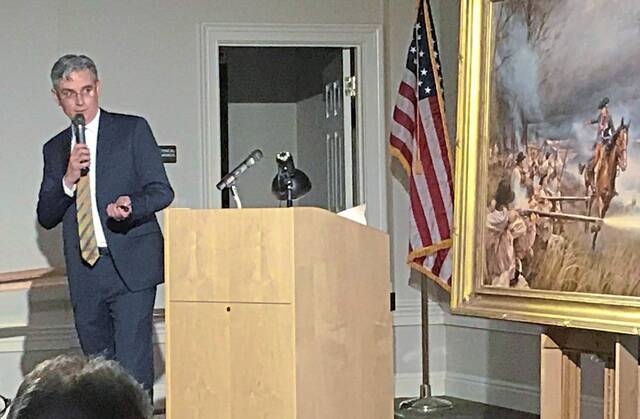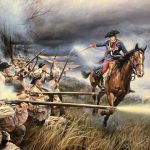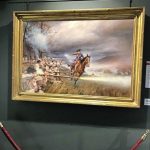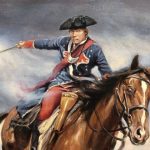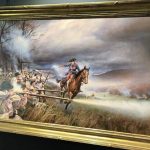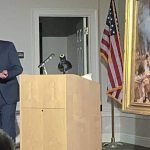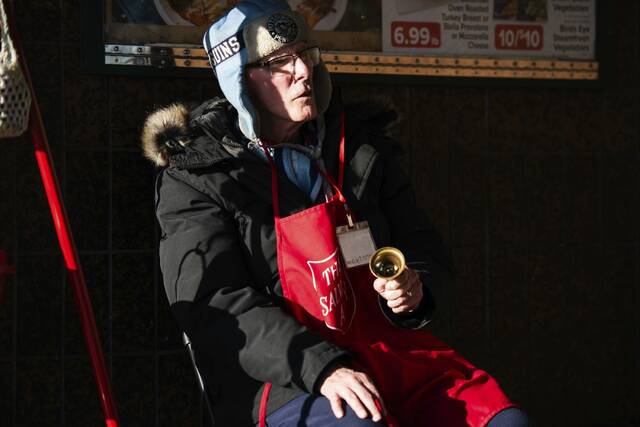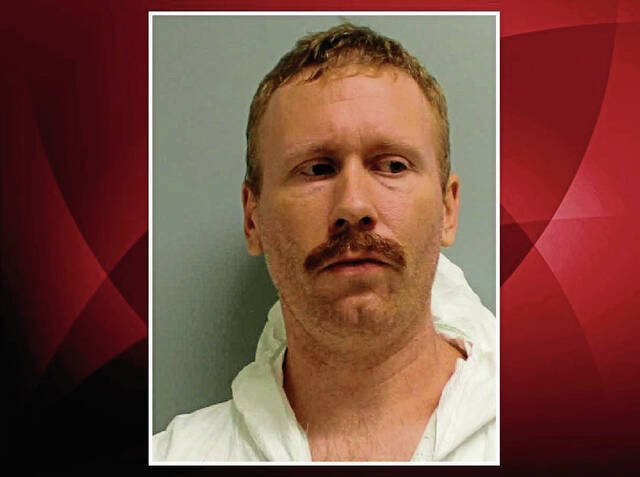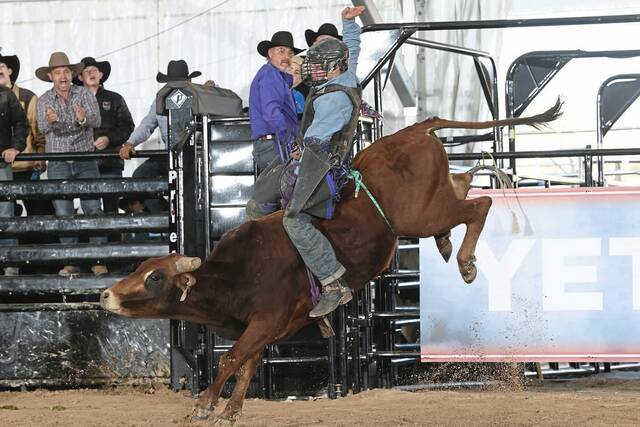Among pivotal French and Indian War dates is Nov. 12, 1758, when a raiding party of French troops from Fort Duquesne and their Native American allies went to filch livestock from the Post at Loyalhanna, later rechristened Fort Ligonier.
The raiders were chased off by about 500 Virginians under Col. George Mercer, with another 500 under the young Col. George Washington sent behind to help surround them. But in the evening dusk, wooded terrain and fog, the situation became confused and the two groups of Virginians fired on each other.
Washington and other officers rode through the middle of the melee to stop the barrage. He escaped unscathed, but two officers and 38 soldiers were either killed or went missing.
This “Friendly Fire Incident” is commemorated in a painting in Fort Ligonier’s George Washington Gallery, which also contains such artifacts from the nation’s first president as Washington’s handwritten recollection of his years on the Pennsylvania frontier and a pair of saddle pistols presented to him by the Marquis de Lafayette.
Renowned artist and Ligonier native Chas Fagan was commissioned to paint “Flash Point,” which depicts Washington on horseback, sword drawn, galloping through the musket fire. It was unveiled April 26, 2019, during the fort association’s annual meeting.
“What’s always fascinated me about the Friendly Fire Incident is that it revealed Washington’s human vulnerability,” Fagan was quoted as saying in the fort’s spring 2019 newsletter. “In that moment, our iconic towering man of American history becomes relatable.”
Most people have had a moment of being overwhelmed by sudden circumstance, the artist said.
“We can place ourselves in Washington’s large boots and imagine the unexpected gunshots in the fog, the realization of the dire situation as soldiers slump to the ground, and the desperate need to act,” Fagan said.
Turning the tide
The incident changed the trajectory of the war in favor of the British Colonials, said Julie Donovan, the fort’s director of marketing and public relations.
Amidst the chaos, “in clothes so tattered they didn’t recognize their own soldiers, they captured three of the French troops and discovered just how vulnerable Fort Duquesne was.”
Instead of waiting as planned until spring for an assault on Fort Duquesne, the Colonials set out the next day with Washington, newly promoted to brevet brigadier general, in command — only to find the fort an abandoned, smoldering ruin.
In preparation for painting “Flash Point,” Donovan said Fagan “went to the presumed friendly fire site in the fall, close to the anniversary date, to be inspired by the surroundings.”
The site that archaeologists and historians deem most likely is on private property about “two or three miles as the crow flies” from Fort Ligonier, Donovan said.
Fagan’s local ties, family history and artistic practice made him the perfect fit for the commission, Donovan said.
He was born in Ligonier in 1966, but spent much of his early life in Belgium with his diplomat father, Charles Fagan III.
The elder Fagan served as principal deputy assistant secretary of commerce under President Richard Nixon and in the state department under President Gerald Ford, as the government’s representative for Europe, based in Brussels. A current Ligonier resident, he is a Fort Ligonier trustee emeritus.
Now a resident of Charlotte, N.C., Chas Fagan is a Yale University graduate with a degree in Russian and East European studies. The earliest works of the self-taught painter and sculptor were political cartoons.
Fagan’s notable commissions include oil portraits of U.S. presidents; statues of President Ronald Reagan in the Rotunda of the U.S. Capitol, astronaut Neil Armstrong at Purdue University and civil rights activist Rosa Parks in the Washington National Cathedral; and the official portrait of Mother Teresa for her canonization at St. Peter’s Basilica in Rome.






